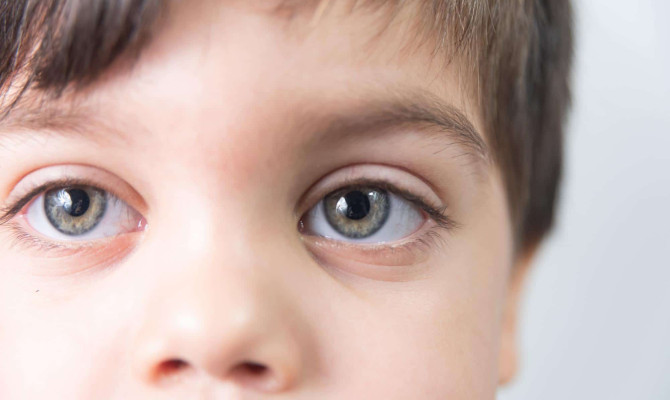Brain cancer : Types, Treatment, and Prevention

- Brain Cancer
- 17 Aug 2023
Overview
What is Brain cancer?
Brain cancers, also called malignant brain tumors, spread quickly and infiltrate nearby healthy parts of the brain. Brain cancer can potentially be fatal due to the modifications it causes to vital brain structures. Malignant tumors that can arise in or near the brain include medulloblastoma, chondrosarcoma, and olfactory neuroblastoma. This article describes the symptoms, kinds, stages, causes, risk factors, diagnosis, complications, management, and outlook of brain cancer.

Key Facts
- Though all forms of brain cancer are tumors, not all tumors in the brain are cancerous.
- The most common cancer-related cause of death in Americans under 35 is brain and CNS cancer.
Symptoms
Symptoms of Brain cancer
Based on the size and location of the cancerous tissue in the brain, various symptoms could be seen and may include:
- A severe and ongoing headache
- An increase in head pressure
- Prolonged nauseous and vomiting episodes
- Fits or seizures
- Issues with hearing
- An increase in hunger
- Loss of balance
- Losing memory
- Drowsiness
- Sudden changes in personality
- Weakness that worsens over time
- Visual impairments
- One-sided paralysis
- Issues with speaking1Symptoms| Researched based study from Cancer.net
Types
Types of Brain cancer
Brain cancer can be broad of two kinds, namely:
- Primary brain cancer
- Secondary brain cancer
Primary brain cancer
- Primary brain cancer develops in the brain from different types of brain cells rather than nerve cells.
Secondary brain cancer
- Also known as metastasized brain cancer, it develops elsewhere in the body before spreading to the brain.2Types| Researched based study from Hopkinsmedicine.org
Based on the type of cell of origin
- Glial type
- Non-glial type
Glial type
Gliomas, which grow in the glial cells that surround and support nerve cells and may contain the following types of cells:
- Astrocytomas – are the most typical kind of glioma, and they develop in glial cells with a starlike shape known as astrocytes. They can develop in any brain area but tend to occur in the cerebrum.
- Ependymomas – frequently occur close to the brain’s ventricles and develop from radial glial cells, also known as ependymal cells.
- Oligodendroglioma is rare cancer that starts in the cells that produce the insulating material surrounding the brain’s nerves called myelin.
- Glioblastoma multiforme (GBM) is the most aggressive and quickly growing kind that invades the local brain tissue but does not spread to distant organs. They are also widespread among other brain cancers.3Types| Researched based study from Aans.org
Non-glial type
Develops on or in the brain’s cellular components, such as neurons, blood vessels, and glands 4Types| Researched based study from Aans.org .It has following types:
- Medulloblastoma – Another rapidly growing brain cancer that develops at the skull base, is the most prevalent type of brain cancer in kids, affecting the entire central nervous system. 5Types| Researched based study from Clevelandclinic.org
- Meningioma – the most frequent type of primary brain tumor. It usually starts in the meninges and is not cancerous; however, it might develop into brain cancer later.
- Pineal and pituitary gland tumors begin in the pituitary and pineal glands.
- Primary CNS lymphoma –The brain is where primary CNS lymphoma begins, although it can also migrate to the spinal fluid and the eyes.6Types| Researched based study from Cancer.net
Stages
Stages or grades of brain cancer
Cancer’s stage indicates how far it has progressed from its initial site. Brain tumors are not staged because, while they may metastasize to other central nervous system organs, they do not spread to lymph nodes or distant organs.
When a pathologist studies tumor cells under a microscope, grade refers to how different tumor cells appear from normal cells.
Grading
The World Health Organization (WHO) grades brain tumors from 1 to 4, with higher numbers suggesting faster growth and more aggressiveness.
- Grade 1 and 2 brain tumors are not cancerous, yet they could develop into cancer.
- Grade 3 and 4 brain tumors are more aggressive and challenging to treat than grade 1 and 2 tumors.7Stages| Researched based study from Rosewellpark.org
Causes
Causes and risk factors of Brain cancer
What specifically causes brain cancer that begins in the brain cells is not known. However, secondary brain cancer is frequently brought on by cancer that has spread from other places of the body to the brain, such as:
- Breast cancer
- Lung cancer
- Bladder cancer
- Skin cancer
According to research, the following risk factors have been linked to brain cancer ;
- Age
- Gender
- Exposure to radiations
- Heredity
- Weak Immunity
- Infections
- Injuries
- Environmental factors
Exposure to radiations
- Exposure to high doses of ionizing radiation like CT scans, X-rays, radiation therapy, and workplace exposure are the most prevalent causes of ionizing radiation.
Hereditary
- Brain tumors can, in rare cases, run in families. Some families have Li-Fraumeni syndrome, von Hippel-Lindau disease, neurofibromatosis, tuberous sclerosis, and others.8Causes| Researched based study from Moffitt.org
Age
- Although anybody can acquire a brain tumor, youngsters and older individuals are more likely to do so.
Gender
- Men are often more prone to acquire brain tumors than women. For instance, Meningioma.
Environmental factors
- Environmental exposure to chemicals such as pesticides, solvents, fertilizers, or vinyl goods may increase the risk of getting a brain tumor.
Immune system weakness
- People who have compromised immune systems are more prone to getting brain lymphomas.8Causes| Researched based study from Moffitt.org
Viral infections
- Epstein-Barr virus (EPV) infections raise the risk of CNS lymphoma.
Head injury
- The link between severe head trauma and brain tumors such as meningiomas has long been researched.9Causes| Researched based study from Cancer.net
Diagnosis
Diagnosis of Brain cancer
If there are any symptoms, a doctor may run the following tests to identify brain cancer:
A neurological examination
- Examines the brain to determine if a tumor is harming it.
- It includes testing a person’s strength, coordination, reflexes, hearing, balance, and other senses.
Imaging tests
It helps locate the tumor.
- A computed tomography scan (CT) is the first imaging test performed if a patient experiences a headache or other symptoms that could have several underlying causes.
- Magnetic Resonance Imaging (MRI) provides a clearer brain image than other imaging tests to find brain cancers.10Diagnosis| Researched based study from Mayoclinic.org
- Positron emission tomography scan (PET) – A PET scan may be the most helpful tool for glioblastomas and other rapidly growing brain tumors.
Other tests
- A lumbar puncture – checks for cancerous cells by removing a tiny sample of the fluid around the brain and spinal cord.
- A brain biopsy – is a surgical operation where a small portion of the tumor is removed to be tested for cancer.
Treatment
Treatment of Brain cancer
The kind, stage, location, size, age, and overall health of the patient may determine the course of treatment for brain cancer:
- Corticosteroids and anti-seizure medications – treat symptoms like headaches, neurological problems, and seizures.
- Surgery – is the most preferred treatment for brain tumors. Removing it whole or in parts might be possible depending on the tumor’s position and size.
- Chemotherapy – can be given through veins or mouth and can kill brain cancer cells and reduce the tumor.
- Radiotherapy uses powerful radiation, such as X-rays, to destroy cancer cells resistant to surgical removal.
- Combination therapy – simultaneous administration of chemotherapy and radiation therapy.
- Biological drugs – restore, strengthen, or direct the body’s natural defenses against cancer—for instance, immunotherapy.
- Other drugs – A doctor may also prescribe medicines to alleviate symptoms and adverse effects by treating a brain tumor and brain cancer.
- Rehabilitation – Physical therapy, occupational therapy, and other therapies may be used during rehabilitation to help patients relearn daily tasks, as treatment may have made it difficult for some people to do their daily activities.
- Complementary therapies – There isn’t much scientific evidence to support adopting complementary medicines to treat brain cancer. However, some doctors advise restoring nutrients lost during cancer treatment, such as eating a balanced diet and taking vitamin and mineral supplements.
Clinical trials for Brain cancer treatment
There are medications or treatments that are still being tested. Immunotherapy and CART may be part of brain cancer clinical trials.
Prevention
Prevention of Brain cancer
Although brain cancer cannot be prevented, there are ways to lower a person’s risk of getting one, as follows :
- Do not smoke.
- Limit exposure to radiation if possible.
- Stay away from pesticides, chemicals, and insecticides.
- People with persistent symptoms of frequent headaches should not delay their visits to a doctor.
- People with a family history of brain cancer or tumor should obtain genetic counseling to determine if they have an inherited genetic condition linked to brain tumors.5Prevention| Researched based study from Clevelandclinic.org
Complications
Complications associated to Brain cancer
Some individuals with a history of brain tumors may experience adverse outcomes from treatment years or months afterward, including:
- Seizures
- Cataracts
- Memory loss
- Problems with judgment
- Issues with speech
- Fluid buildup in the brain
- Newly appearing brain tumors
- Difficulties walking
- Increased pressure in the head12Complications| Researched based study from Cancerresearchuk.org
- Rarely a stroke
- Death 11Complications| Researched based study from Nlm.nih.gov
Prognosis
Prognosis of Brain cancer
Receiving a brain cancer diagnosis can be frightening, but new therapies and studies are increasing the likelihood of survival for a patient. Glioblastoma, a stage 4 brain cancer, has an average survival timeline of 12 to 18 months 13Prognosis| Researched based study from Thebraintumourcharity.org .Nearly 36% of cancer of the brain or CNS survive after five years.14Prognosis| Researched based study from Cancer.net However, it is only statistical information, and each person’s rate varies depending on various parameters, including the tumor’s location in the brain, the size, the grade, and the person’s general health. Early detection and proper management greatly enhance the likelihood of survival for brain cancer.
Any feedback on this article?
 This Articles content was accurate
This Articles content was accurate Very Informative Article
Very Informative Article I have a question or a comment
I have a question or a comment
 This article contains inaccurate content
This article contains inaccurate content This article was not helpful
This article was not helpful I have a question or a comment
I have a question or a comment
We appreciate your helpful feedback!
Checkout our social pages
References
-
American Society of Clinical Oncology
Brain Tumor: Symptoms and Signs | Symptoms
-
John Hopkins Medicine
Brain Tumors and Brain Cancer | Types
-
American Association of Neurological Surgeons
Glioblastoma Multiforme | Types
-
American Association of Neurological Surgeons
Brain Tumors | Types
-
Cleveland Clinic
Brain Cancer (Brain Tumor) | Types
-
American Society of Clinical Oncology
Brain Tumor: Introduction | Types
-
Roswell Park Comprehensive Cancer Center
Staging and Grading Brain Cancer and Brain Tumors | Grade
-
Moffitt Cancer Center
What Causes Brain Cancer? | Causes & Risk
-
American Society of Clinical Oncology
Brain Tumor: Risk Factors | Causes & Risk
-
Mayo Clinic
Brain tumor | Diagnosis
-
National Library of Medicine
Brain Metastasis | Complications
-
Cancer Research UK
Side effects of radiotherapy for brain tumours | Complications
-
The Brain Tumour Charity
Astrocytoma Prognosis | Prognosis
-
American Society of Clinical Oncology
Brain Tumor: Statistics | Prognosis




































